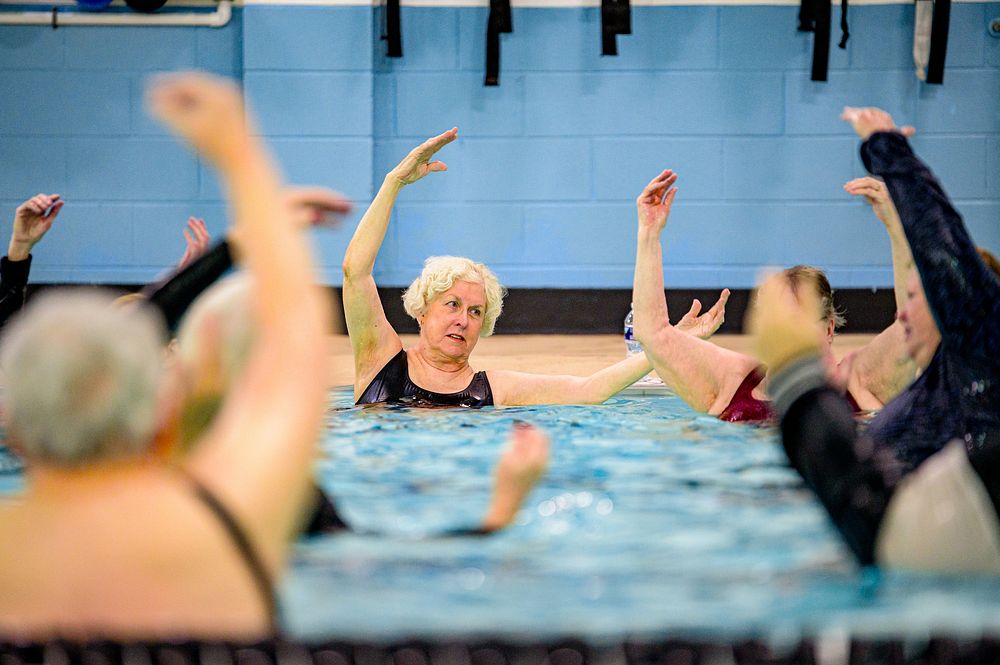
-
Diabetic skin requires special care to prevent complications.
-
Hydrotherapy can enhance skin health and blood circulation.
-
Optimal water temperature and session length are crucial for safety and effectiveness.
-
Engaging in pool exercises can be both fun and therapeutic.
-
Always consult a healthcare provider before starting hydrotherapy.
Understanding Diabetic Skin Complications
Living with diabetes means you have to take extra care of your skin. That’s because high blood sugar can cause a range of skin problems, from dryness to infections. The good news is that there are ways to help manage these issues, and one of them is hydrotherapy—a therapeutic approach that involves water. Let’s dive into what you need to know about taking care of your diabetic skin with hydrotherapy.
Risks Unique to Diabetic Skin
If you have diabetes, your skin can tell a story. It’s more prone to dryness, cracking, and infections. That’s because high blood sugar can damage your blood vessels and nerves, reducing blood flow and sensation in the skin. This makes it harder for your skin to heal and easier for harmful bacteria to cause infections.
The Link Between Blood Glucose Control and Skin Health
Keeping your blood sugar levels in check is key to protecting your skin. Good glucose control can help prevent those skin complications. It’s like a domino effect: stable blood sugar means healthier blood vessels, better blood flow, and more nourished skin. And when your skin is healthy, it’s more resistant to damage and heals faster.
The Healing Properties of Water
Water is more than just a thirst quencher—it’s a healer. Hydrotherapy, or water therapy, uses the properties of water to improve health. For diabetic skin, it can be a game-changer. The gentle pressure of water can enhance blood circulation, which is often compromised in diabetics. Improved circulation means more oxygen and nutrients for your skin, promoting healing and reducing the risk of complications.
How Hydrotherapy Benefits Your Skin
Hydrotherapy does wonders for your skin. It hydrates, soothes, and can even reduce inflammation. When you’re submerged in water, the hydrostatic pressure acts like a gentle massage, helping your blood to circulate better. It’s a simple, yet effective way to give your skin the attention it deserves.
Understanding the Science Behind Hydrotherapy
There’s real science at play with hydrotherapy. Warm water can help dilate your blood vessels, increasing blood flow to the skin. Cold water, on the other hand, can reduce inflammation and soothe hot, irritated skin. It’s all about using the right temperature for the right situation to help your skin stay healthy.
Incorporating Fun Exercises in the Pool

Let’s make managing diabetes more enjoyable. Pool exercises are not only beneficial for your skin but also for your blood sugar levels. When you move around in the water, you’re getting a low-impact workout that’s easy on the joints and good for the heart. Try activities like water aerobics, swimming laps, or even just walking in the shallow end. The resistance of the water means you’re getting a good workout without even realizing it.
Relaxation Techniques and Stress Reduction
Besides physical exercises, the pool can be a place of relaxation. Stress can wreak havoc on blood sugar levels, so it’s important to find ways to unwind. Practice deep breathing while floating, or try gentle stretching exercises to ease tension. The soothing effect of water can help reduce stress hormones, making it easier to manage your diabetes.
Protecting Your Skin During and After Pool Time
While hydrotherapy can be great for your skin, it’s important to protect it too. Prolonged exposure to water, especially chlorinated pool water, can dry out your skin. Make sure to rinse off with fresh water after your pool session. Gently pat your skin dry and apply a moisturizer designed for diabetic skin, which typically is fragrance-free and contains ingredients that help retain moisture.
And remember, hydration starts from within. Drink plenty of water before, during, and after your pool time to keep your skin—and the rest of your body—hydrated.
Choosing the Right Skin Care Products
With diabetic skin, you can’t just use any product off the shelf. Look for items that are specifically formulated for sensitive or diabetic skin. These products should be free of irritants like fragrances and dyes, and should include ingredients that promote healing and moisture retention, such as glycerin, lanolin, or urea.
Post-Hydrotherapy Skin Care Tips

After enjoying the pool, your skin care routine should kick in immediately. Apply a diabetic-friendly cream or lotion to lock in moisture. If you notice any cuts or scrapes, clean them promptly with a gentle cleanser and apply an antibiotic ointment if necessary. This helps prevent infections, which can be a serious concern for diabetics.
Addressing Concerns: Safety Measures for Diabetics
While hydrotherapy can be incredibly beneficial, safety always comes first. Keep a close eye on your skin for any changes or injuries. Diabetics are at higher risk for foot injuries, so consider wearing water shoes to protect your feet. Also, monitor your blood sugar before and after pool time to ensure it stays within your target range.
Preventing Infections and Other Complications
Infections are a real threat for diabetics, so prevention is key. Keep your glucose levels controlled, as high sugar can encourage bacterial growth. Dry your skin thoroughly, especially between toes and other creases, where moisture can linger. And if you do spot an infection, treat it early—don’t wait for it to get worse.
When to Avoid Hydrotherapy: Recognizing the Signs
There are times when hydrotherapy might not be the best idea. If you have open wounds or active infections, it’s best to stay out of the pool until you’re healed. If you’re feeling unwell or your blood sugar is not well-controlled, it’s also wise to skip your pool session. Listen to your body and consult your healthcare provider if you’re unsure.
Success Stories: Diabetics Who Found Relief Through Hydrotherapy
Many diabetics have found hydrotherapy to be a turning point in managing their condition. Take Sarah, for example, who after starting regular pool exercises, noticed not just an improvement in her skin condition, but also a more stable blood sugar level. It’s stories like hers that show the potential of hydrotherapy as part of a comprehensive diabetes care plan.
Real-Life Testimonials and Outcomes
John, a type 2 diabetic, found that after incorporating hydrotherapy into his routine, his need for insulin decreased. This isn’t just a coincidence—studies have shown that the heat from warm water can help lower blood sugar levels. John’s experience is a testament to the power of combining medical treatment with holistic approaches.
Research and Studies Supporting Hydrotherapy for Diabetic Skin Care
Research backs up the anecdotal evidence. A study by Dr. Philip L. Hooper showed that patients with type 2 diabetes who participated in regular hydrotherapy sessions experienced weight loss and reduced blood glucose levels. These findings underscore the importance of looking beyond traditional treatments and considering alternative therapies like hydrotherapy.
Incorporating Hydrotherapy Into Your Diabetes Management Plan
Before you jump into the pool, have a chat with your healthcare provider. They can guide you on how to safely incorporate hydrotherapy into your diabetes management plan. Together, you can determine the best approach that takes into account your specific health needs and lifestyle. Hydrotherapy could be the refreshing addition your diabetes care routine needs.
Consulting Your Healthcare Provider
Before you start splashing around, it’s important to talk to your healthcare provider. They know your health history and can give you personalized advice on how to safely use hydrotherapy. This might include specific temperature settings, session lengths, and even the best times of day to take a dip. They can also tell you what to watch out for, like changes in your skin that might need medical attention.
Setting Realistic Expectations and Goals
Hydrotherapy can be a relaxing and beneficial part of your diabetes management, but it’s not a cure-all. Set realistic expectations about what it can do for you. Your goals might include improving skin hydration, increasing circulation, or simply reducing stress. Whatever your objectives, keep them achievable and monitor your progress.
FAQs: Common Questions About Diabetic Skin Care and Hydrotherapy
1. Is Hydrotherapy Safe for All Diabetics?
Most people with diabetes can safely enjoy hydrotherapy, but there are exceptions. If you have complications like open wounds, severe neuropathy, or poor circulation, you should get the green light from your doctor first. They’ll help you understand any risks and how to avoid them.
2. How Often Should I Engage in Hydrotherapy?
There’s no one-size-fits-all answer here. It depends on your individual health and how your skin reacts to water. Some may benefit from daily sessions, while others might do better with a few times a week. Always start slow and see how your body responds before increasing frequency.
3. What Should I Do If I Notice Skin Changes After Hydrotherapy?
If you notice any new skin issues—like increased dryness, irritation, or infections—after starting hydrotherapy, talk to your doctor. They might suggest adjusting your water temperature, duration of sessions, or skin care products. It’s all about finding the right balance for your skin.
4. Can Hydrotherapy Replace My Current Skin Care Routine?
Hydrotherapy should complement, not replace, your current skin care routine. It’s an addition that can enhance the benefits of the moisturizers and creams you’re already using. Think of it as an extra layer of care for your skin.
5. Do I Need Special Equipment for Hydrotherapy at Home?
You don’t necessarily need special equipment to enjoy hydrotherapy at home. A standard bathtub can work for soaking, and you can adjust the water temperature to your needs. If you want a more spa-like experience, consider a portable foot spa or a showerhead with adjustable settings.
For individuals with diabetes, skin care is of paramount importance. High blood sugar levels can lead to dry skin, making it prone to cracking and infections. Hydrotherapy, or water therapy, can be a soothing solution. By taking a dip inside the pool, you can enjoy the gentle, therapeutic benefits of water. Not only can this improve circulation and hydrate the skin, but it may also aid in the management of blood sugar levels.


